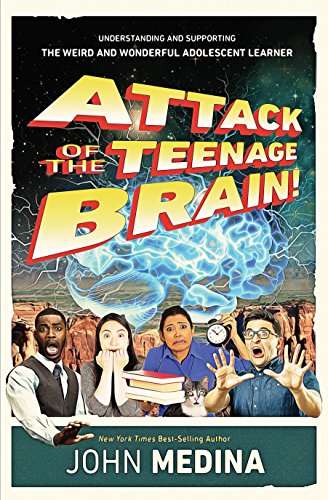Attack of the Teenage Brain! Understanding and Supporting the Weird and Wonderful Adolescent Learner by John Medina Link to heading
Summary Link to heading
“Attack of the Teenage Brain!” by John Medina delves into the complexities of adolescent brain development and its impact on learning and behavior. The book explores the unique characteristics of the teenage brain, characterized by rapid development and a need for stimulation and novelty. Medina discusses how educators and parents can better support adolescents by understanding these neurological changes. With a focus on practical strategies, the book provides insights into creating more effective educational environments and fostering meaningful connections with teens. The central themes include the importance of executive function development, emotional regulation, and the role of social dynamics in learning.
Review Link to heading
John Medina’s book effectively applies scientific research to real-world educational practices, making it a valuable resource for those seeking to improve their understanding of adolescent learners. One of the book’s strengths is its engaging writing style, which makes complex neuroscientific concepts accessible. Medina’s use of humor and real-life examples enhances the reader’s engagement. However, some readers may find the content occasionally repetitive, and while the scientific explanations are thorough, they may delve into more detail than necessary for a general audience.
Key Takeaways Link to heading
- Adolescent brains are undergoing significant structural and functional changes, which influence behavior and learning capabilities.
- Executive function skills, such as planning, decision-making, and emotional regulation, are critical during adolescence and can be nurtured through targeted educational practices.
- Social interaction plays a significant role in adolescent learning, and fostering positive social dynamics in educational settings can enhance engagement and motivation.
- Educators can create more effective learning environments by incorporating elements that cater to teenagers’ needs for novelty and stimulation.
Recommendation Link to heading
“Attack of the Teenage Brain!” is recommended for educators, parents, and anyone involved in the education or care of adolescents. Its insights into adolescent brain development can help improve learning outcomes and foster more supportive environments. Those interested in the intersection of neuroscience and education will find this book particularly enlightening and useful for practical application.
